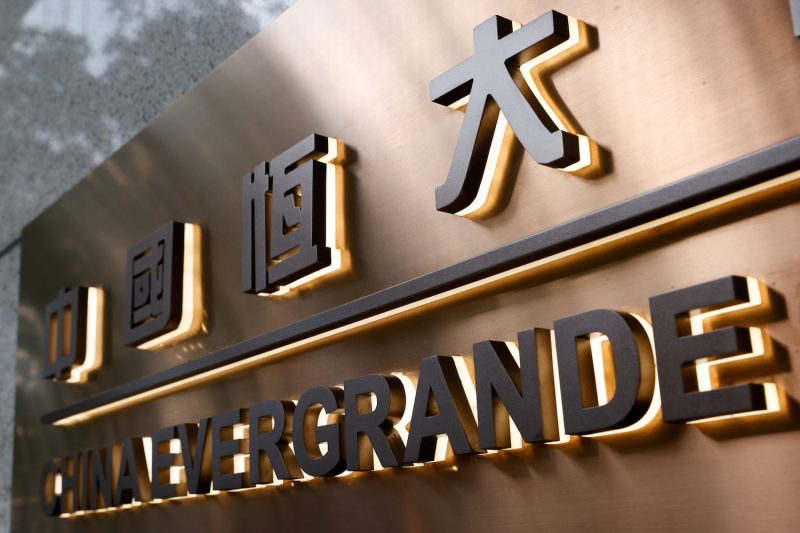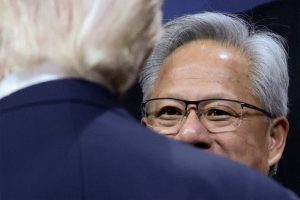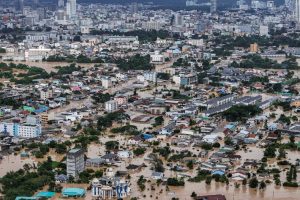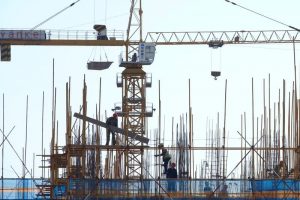China Evergrande Group is expected to get an indication on Thursday of the level of creditor backing for its offshore debt restructuring proposal.
Investors have been offered an incentive for early support, but raising Evergrande from the ‘virtual dead’ could cost $40 billion. And we may not know the outcome till the end of the year.
While some major creditors have already agreed to support the restructuring proposal, others are eager to cut ties with the debt-laden property developer and move on.
The following is a guide to basic details of China’s biggest ever debt fiasco:
What does the offshore debt rejig proposal offer?
Published on March 22, the near 200-page term sheets gave creditors a series of options to swap their debt into new notes with maturities of 10 to 12 years, or convert them into different combinations of new notes with tenors of five to nine years and equity-linked instruments.
The equity-linked instruments will be backed by the group and its two Hong Kong-listed companies, Evergrande Property Services Group and Evergrande New Energy Vehicle Group.
Bondholders of notes issued by Evergrande’s offshore units, Scenery Journey and Tianji Holding, will be able to exchange their existing debt for new notes with tenor of four to eight years, which will start paying coupons from the fourth year.
What happens next in the process?
Creditors would receive a 0.25% consent fee based on the outstanding principal of their debts by way of new notes if they agreed to support the restructuring by Thursday at 0900 GMT – a deadline that could be extended by the company.
Evergrande and creditors will continue talks to finalize restructuring terms. The actual voting date will be decided by court later and is expected to be in the third quarter. The proposal requires approval from more than 75% in creditor value in each debt class in order to pass.
The effective date for the restructuring to be implemented is expected to be October 1, while the long-stop date – after which the plan could lapse – is December 15, though both are extendable.
Concerns about the proposal
The equity value of the equity-linked instruments is hard to pin down, as shares of Evergrande and its two listed units have been suspended from trading since March 2022, and they could face a delisting if they fail to resume trading by the end of September.
Evergrande has said additional financing of 250 billion to 300 billion yuan ($36-43 billion) would be required as it resumes operations over the next three years.
The electric vehicle business has also said it might have to halt production if it could not obtain fresh funding.
If Evergrande fails to push ahead with the restructuring plan, the developer may have to face liquidation proceedings filed by an investor in one of its units in a Hong Kong court.
The recovery for offshore creditors in a group-wide liquidation is expected to be less than $1.5 billion, a rate of 2.1% to 9.3% depending on the type of debt held, according to an analysis Evergrande commissioned.
How did Evergrande rack up debts of $274bn?
Chairman Hui Ka Yan founded Evergrande in Guangzhou in 1996 and listed the company in Hong Kong in 2009.
The company grew rapidly through a land-buying spree backed by loans and by selling apartments quickly at low margins. It was the second-largest developer in China in 2020, with $110 billion in sales, $355 billion in assets and more than 1,300 developments nationwide.
But after plunging into a debt crisis in the middle of 2021, Evergrande’s ranking slipped to No-5 with $65 billion in sales, and then to No-42 with $6.6 billion in sales in 2022.
Its liabilities, including payables, totalled $274 billion at the end of 2021.
It is also the biggest dollar bond issuer in the sector. Its entire $22.7 billion worth of offshore debt was deemed in default after it missed several bond payments in late 2021. The crisis subsequently engulfed its peers as their credit conditions deteriorated, and drove many developers into default.
What have Chinese regulators done?
Evergrande established a risk-management committee in December 2021 that included officials from state companies to assist in its debt and asset restructuring.
Authorities have been assuring markets that risks to the property sector and economy can be controlled, and that Evergrande’s problems are mainly due to its “own mismanagement” and “break-neck expansion”.
They have assisted in an orderly collapse of Evergrande, while making sure the top priority for the developer is to ensure home delivery to buyers, by facilitating state-own companies to takeover some of its developments.
- Reuters with additional editing by Jim Pollard
ALSO SEE:
China Evergrande Vows to Fight Wind-up Move, Continue Rejig
China Evergrande Handed Delisting Deadline by HK Exchange
Beleaguered China Evergrande Group Loses Fitch Rating
Evergrande Looks at All Options to Pay Huge Offshore Debts























